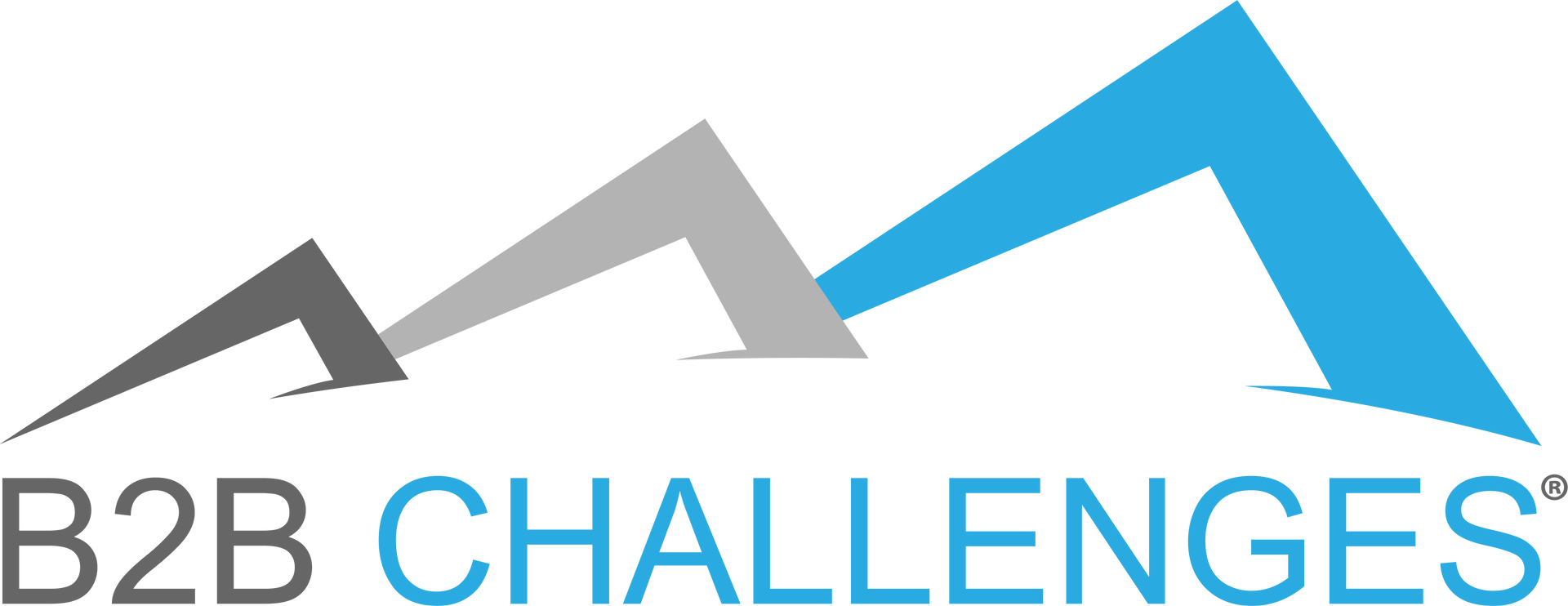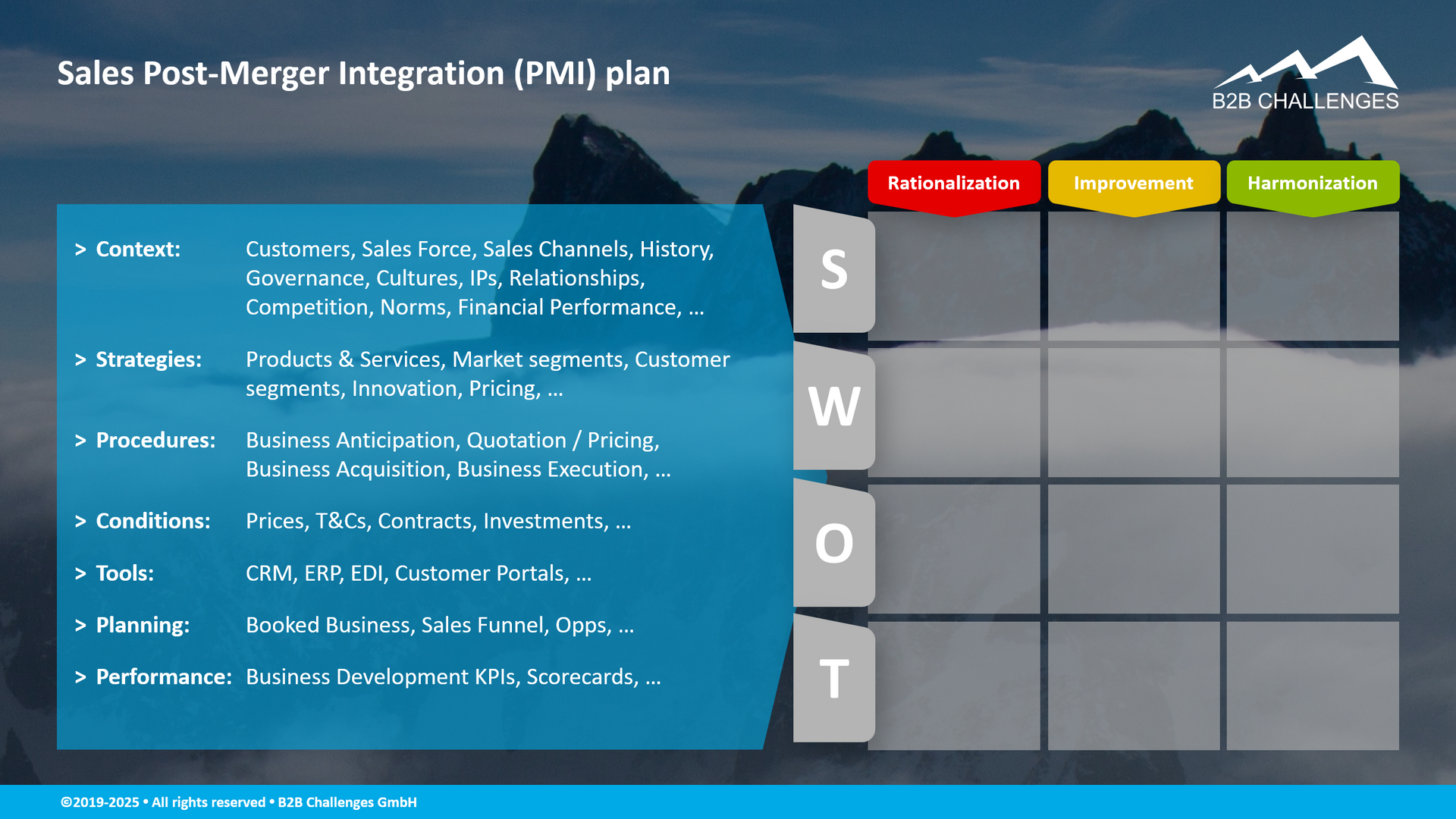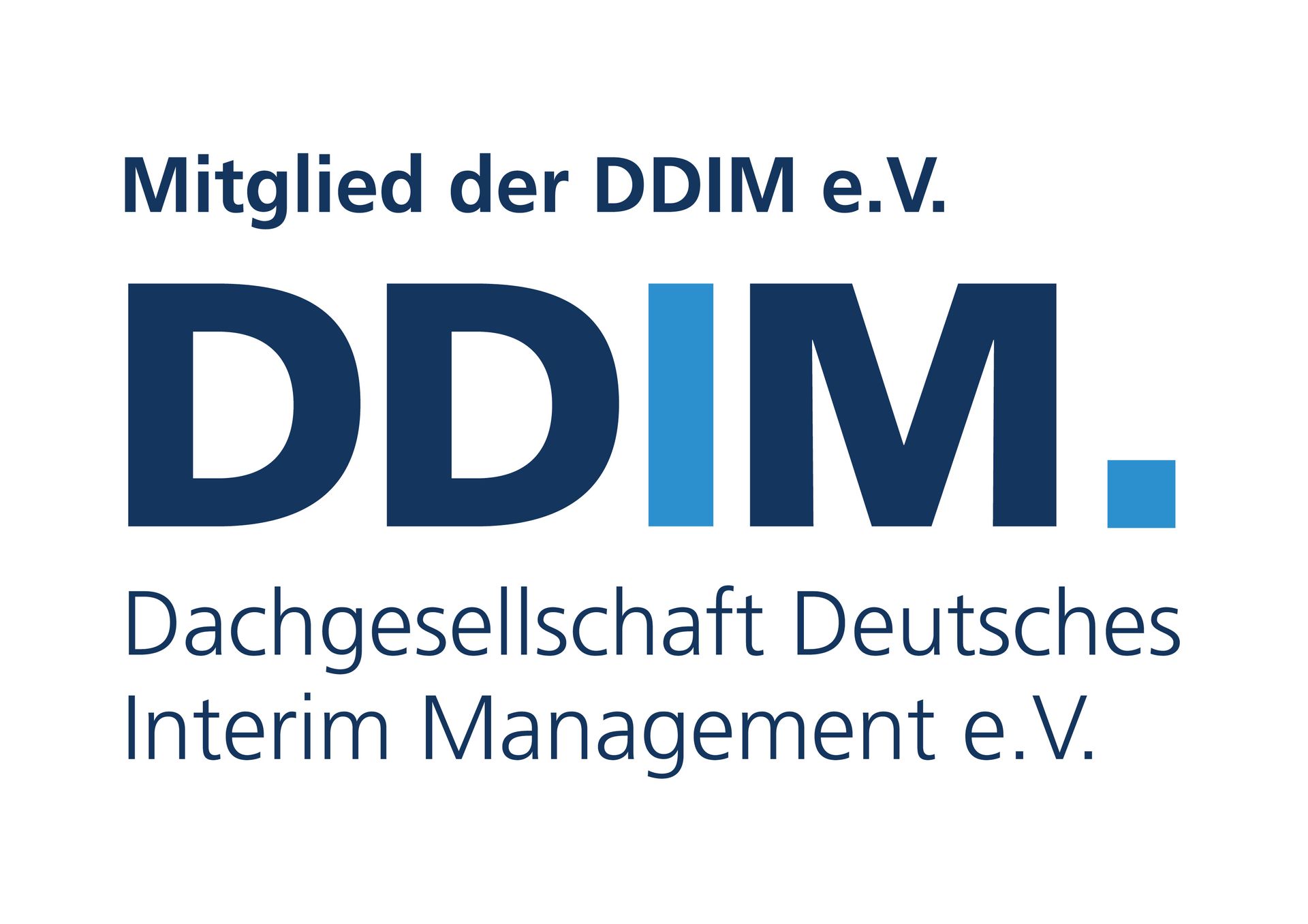M&A Transition
Conducting effective commercial transition and integration before and after the closing of a transaction
M&A workflows involving the sales departments
The M&A transition (or Post-Merger Integration) planning starts during the preparatory phase of the transaction. At each stage, numerous workflows need to be executed within the required timeframe. These workflows determine the success of the carve-in / carve-out and, ultimately, the achievement of the objectives of the M&A project. The sales department on buyer and seller sides play a decisive role in the preparation and implementation of the commercial conditions as well as the sales strategy, and of course in the communication with the customers. Regular monitoring and the ability to adapt plans as needed further support the achievement of integration goals, ultimately maximizing value for all stakeholders.
Sales Post-Merger Integration (PMI) plan
A post-merger commercial integration plan is a strategic roadmap that details how to unify the commercial functions of merging entities, ensuring alignment with the merger’s objectives, context, and timeline. This plan is built on a thorough, multidimensional analysis of both organizations, covering strategies, cultures, customers, teams, products, services, channels, processes, tools, and financial data. By addressing these aspects in depth, the plan aims to identify synergies, mitigate risks, and resolve potential conflicts. Effective stakeholder engagement and clear communication are emphasized to secure buy-in and facilitate a smooth, efficient transition, ultimately maximizing the value of the merger.
Customer Post-Merger Integration concerns
Internal stakeholders are not the only ones affected by the preparation and implementation of post-merger integration. Customers are of course also affected! From the very first communication, they will express various concerns, usually in a sequential manner. Therefore, customer experience and loyalty must be prioritized in integration planning. This includes effective communication and appropriate actions. The goal is to convince customers of the benefits, sequence activities, reduce complexity, and fill gaps as they arise. It is therefore essential to prepare and empower employees for their interactions with customers.
The content of this page is not exhaustive and will be completed from time to time.









